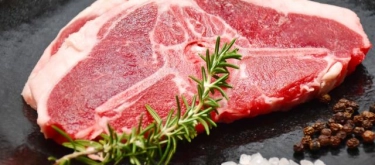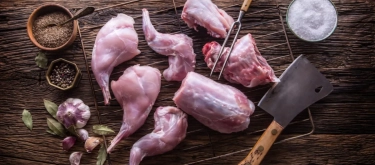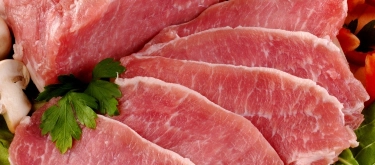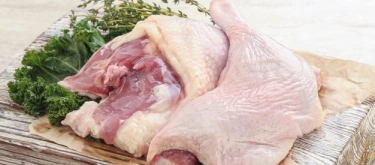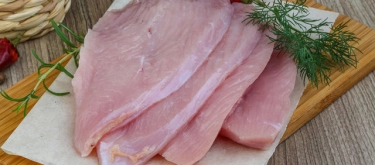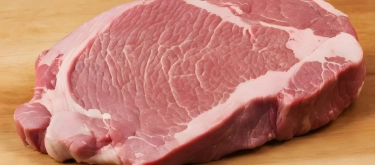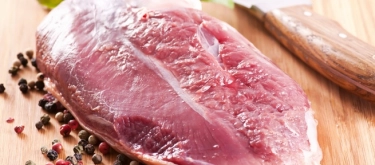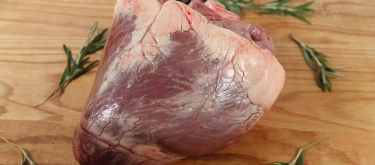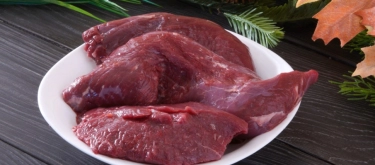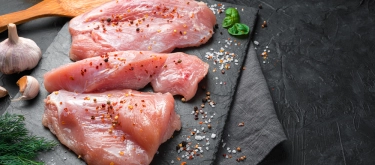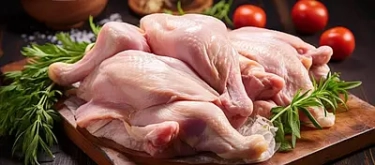Pork: Taste Profile, Aroma, Benefits and Health Risks
Pork is one of the most widely consumed meats globally, playing a central role in culinary traditions from Europe and Asia to the Americas. Known for its versatility, tender texture, and succulent flavor, pork encompasses a diverse range of cuts, each with distinct culinary characteristics. Historically celebrated in both everyday and festive dishes, pork’s culinary significance has evolved through centuries, enriching cultural gastronomy worldwide.
Pork is animal-based meat, thus unsuitable for vegetarians, vegans, and individuals adhering to certain cultural or religious dietary restrictions. Pork products are naturally gluten-free, but always verify seasoning or processing ingredients if sensitive to gluten. It requires thorough cooking to eliminate the risk of parasites or foodborne illnesses.
What does Pork taste like?

Complete Sensory Description
Taste:
Pork possesses a mild yet richly savory, subtly sweet flavor. The taste varies by cut—lean cuts such as loin have a delicate, mild sweetness, while fattier cuts like pork belly and ribs feature richer, more intense savory notes with hints of caramelization and umami.
Aroma:
Fresh pork has a gentle, mild aroma. Cooked pork develops deeper fragrances—ranging from lightly sweet, caramelized notes (roasting) to intense, smoky aromas from grilling or smoking.
Texture:
Pork’s texture is remarkably varied, ranging from the tender, juicy quality of pork loin or tenderloin, to the richly layered, melt-in-the-mouth tenderness of slow-cooked pork belly or ribs. Properly cooked pork achieves a delicate balance between firmness and tenderness.
Appearance:
Raw pork typically has a pale pink to reddish hue, with visible marbling in fattier cuts. When cooked, pork turns pale pinkish-white to brown, depending on preparation methods, developing attractive golden or caramelized crusts during roasting or grilling.
Varieties and Culinary Influence
-
Pork Loin and Tenderloin:
Lean, tender, mild-tasting, ideal for roasting, grilling, or pan-searing. -
Pork Shoulder and Butt:
Rich, flavorful cuts excellent for slow cooking, stewing, or smoking. -
Pork Belly:
Rich, fatty, intensely flavorful—perfectly suited for roasting, braising, or grilling to achieve crispy textures. -
Pork Ribs:
Tender and juicy, ideal for barbecuing, grilling, or slow-cooking to develop full flavor complexity.
In-depth Flavor Analysis
-
Savory & Umami Richness:
Pork’s natural umami and savory qualities enhance dishes profoundly, complemented by subtle sweetness and satisfying richness from fat content. -
Fat and Flavor:
Marbling contributes significantly to pork’s flavor, enriching taste, tenderness, and mouthfeel, particularly in belly, ribs, or shoulder cuts. -
Caramelization & Maillard Reaction:
Cooking pork via roasting, grilling, or frying develops complex, aromatic flavor notes through caramelization and the Maillard reaction, enhancing depth, savoriness, and appetizing appeal. -
Flavor Evolution:
Pork flavor evolves distinctly during cooking—from mild sweetness when gently cooked to intense savoriness and richness in slow-roasted or grilled preparations.
Culinary Applications
-
Roasting and Grilling:
Ideal for pork chops, tenderloins, or roasts, developing succulent textures and flavorful crusts. -
Stews and Braises:
Fattier cuts (shoulder, belly) provide rich depth and tenderness in slow-cooked dishes, including classic pork stew, pulled pork, and pork carnitas. -
Asian Cuisine:
Widely utilized in Asian dishes, pork features prominently in stir-fries, dumplings, ramen, char siu pork, sweet-and-sour pork, and numerous other recipes. -
Sausages and Charcuterie:
Pork’s versatility makes it essential for cured meats, sausages, smoked hams, salamis, prosciutto, and various traditional delicacies globally.
Selection and Storage
Selecting Quality Pork:
- Choose fresh pork that appears moist, firm, and pinkish-red, with minimal liquid leakage and no unpleasant odors.
- Opt for cuts with appropriate marbling (fat distribution), indicating tenderness and richer flavor upon cooking.
Storage Recommendations:
- Refrigerate fresh pork immediately at temperatures below 4°C (39°F) and consume within 3–4 days.
- For longer storage, freeze pork in airtight packaging; consume frozen pork ideally within 3–6 months for optimal quality.

Nutritional Insights
-
High-Quality Protein:
Pork provides abundant protein essential for muscle growth, repair, and overall health. -
Vitamins and Minerals:
Rich in B-vitamins (B1, B6, B12), iron, zinc, phosphorus, and selenium—essential nutrients supporting immune function, metabolism, and neurological health. -
Healthy Fat Profile (Depending on Cuts):
Lean pork cuts offer a healthy protein source with relatively low saturated fat, while fattier cuts contain higher fat and calorie levels requiring moderation.
Expert Insights & Culinary Tips
-
Cooking Safety:
Chefs and nutrition experts recommend cooking pork thoroughly to internal temperatures of at least 63°C (145°F) to ensure safety and optimal texture. -
Flavor Enhancements:
Pork pairs excellently with herbs and spices (rosemary, sage, garlic, paprika), sweet components (apple, honey, maple syrup), and acidic marinades (citrus juices, vinegar), elevating its natural flavors. -
Resting Period:
Rest cooked pork briefly (5–10 minutes) to retain juiciness, tenderness, and flavor intensity before slicing and serving.
Interesting and Curious Facts
- Pork is historically one of humanity’s oldest domesticated meats, with archaeological evidence of pig farming dating back over 9,000 years.
- Globally, pork is the most consumed meat, significantly surpassing beef and poultry consumption in many cultures.
- Pork has strong cultural significance in cuisines worldwide, central to traditional dishes like Spanish jamón ibérico, German sausages, Chinese barbecue pork (Char siu), and American BBQ ribs.
How to Enjoy Pork
- Grill pork chops with herbs and garlic for a succulent, flavorful main dish.
- Slow-cook pork shoulder for tender pulled pork sandwiches or tacos.
- Roast pork tenderloin with apples, honey, or mustard glaze for a sweet-savory gourmet experience.
- Incorporate pork belly into stir-fries, ramen, or braised dishes for indulgent, flavor-rich meals.
Harm and Dietary Considerations
-
Parasite Risk:
Pork must be cooked thoroughly to avoid parasites such as Trichinella, which can cause serious illness. -
Fat and Calorie Content:
Certain pork cuts (especially belly, ribs, and bacon) contain higher saturated fat, requiring moderation for those managing heart health or caloric intake. -
High Cholesterol:
Some cuts of pork are high in cholesterol and saturated fats; moderate intake is advised for those managing cholesterol levels.
Final Thoughts & Sensory Journey
Pork’s rich, savory character and versatile culinary potential invite a flavorful journey enjoyed worldwide. From succulent, tender cuts to crispy, caramelized delicacies, pork transforms simple meals into memorable dining experiences. Its universal appeal, combined with deep-rooted culinary heritage, makes pork a delicious cornerstone of global gastronomy.
Resources
- McGee, H. (2004). On Food and Cooking: The Science and Lore of the Kitchen. Scribner.
- USDA Food Safety and Inspection Service (2022). Pork: Nutrition Facts and Safe Cooking Guidelines.
- Food and Agriculture Organization (FAO). (2021). Global Pork Production and Consumption: Trends and Cultural Significance.

